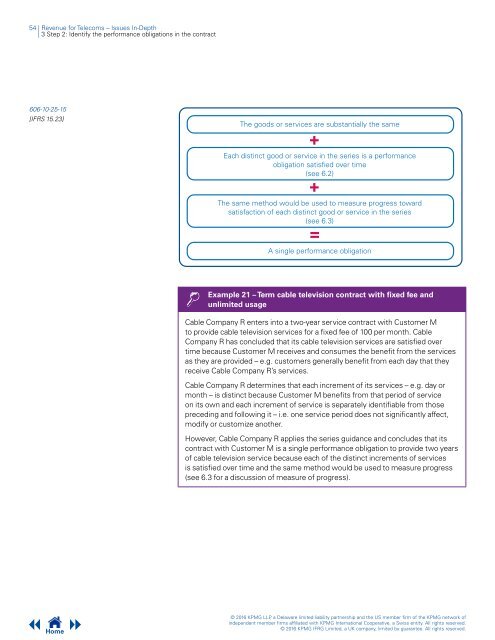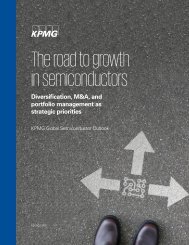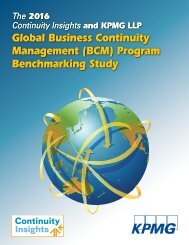Revenue for Telecoms
2cdncba
2cdncba
Create successful ePaper yourself
Turn your PDF publications into a flip-book with our unique Google optimized e-Paper software.
54 | <strong>Revenue</strong> <strong>for</strong> <strong>Telecoms</strong> – Issues In-Depth<br />
| 3 Step 2: Identify the per<strong>for</strong>mance obligations in the contract<br />
606-10-25-15<br />
[IFRS 15.23]<br />
The goods or services are substantially the same<br />
+<br />
Each distinct good or service in the series is a per<strong>for</strong>mance<br />
obligation satisfied over time<br />
(see 6.2)<br />
+<br />
The same method would be used to measure progress toward<br />
satisfaction of each distinct good or service in the series<br />
(see 6.3)<br />
=<br />
A single per<strong>for</strong>mance obligation<br />
Example 21 – Term cable television contract with fixed fee and<br />
unlimited usage<br />
Cable Company R enters into a two-year service contract with Customer M<br />
to provide cable television services <strong>for</strong> a fixed fee of 100 per month. Cable<br />
Company R has concluded that its cable television services are satisfied over<br />
time because Customer M receives and consumes the benefit from the services<br />
as they are provided – e.g. customers generally benefit from each day that they<br />
receive Cable Company R’s services.<br />
Cable Company R determines that each increment of its services – e.g. day or<br />
month – is distinct because Customer M benefits from that period of service<br />
on its own and each increment of service is separately identifiable from those<br />
preceding and following it – i.e. one service period does not significantly affect,<br />
modify or customize another.<br />
However, Cable Company R applies the series guidance and concludes that its<br />
contract with Customer M is a single per<strong>for</strong>mance obligation to provide two years<br />
of cable television service because each of the distinct increments of services<br />
is satisfied over time and the same method would be used to measure progress<br />
(see 6.3 <strong>for</strong> a discussion of measure of progress).<br />
Home<br />
© 2016 KPMG LLP, a Delaware limited liability partnership and the US member firm of the KPMG network of<br />
independent member firms affiliated with KPMG International Cooperative, a Swiss entity. All rights reserved.<br />
© 2016 KPMG IFRG Limited, a UK company, limited by guarantee. All rights reserved.







